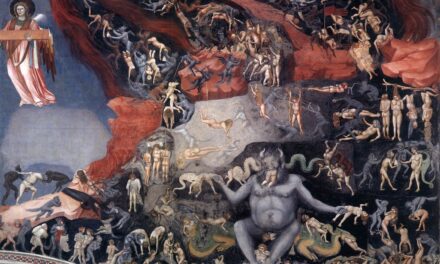When the seventeenth century philosopher René Descartes said, “I think therefore I am,” he was astutely stating what most of humanity still believes to this day—that we are our thoughts.
Despite the fact that all thoughts are fleeting, lasting seconds at most, very few investigate that which remains in between, as well as before and after thought. If one closes their eyes and observes thought, there is an unmistakable sense of being that remains after one thought has ceased and before another begins. This is the Still Point. It is not only present between thoughts but rather it is ever-present.
This is the “reality” that gives us the sense “I am.” This sense that “I am” is the highest spiritual pointer leading directly to our true nature. Instead of giving this deep, ever-present mystery attention, we give almost all of our attention to the virtual world that our incessant thinking creates in nearly every moment. I say “creates,” but “miscreates” would be a better word because the virtual world created by the thinking mind is vastly inferior to the actual world of raw, nonjudgmental experience.
When we believe that thinking is part of who we are, along with our feelings and the physical body, the world we seem to live in is mostly lived in our heads, created by the continual stream of thinking that labels and judges everything. When we meet a friend over a casual drink, for example, we bring into the encounter a huge number of past associations and judgements about that person that completely cloud the “reality” of the experience with the thinking mind. We are not meeting that person, really—our thoughts and beliefs about who we are is meeting who we think and believe that person to be. This is why most conversations follow along conditioned patterns of thinking that we have already established, and are far from fresh, open, and novel. When you see this, you realize this is the same with almost every experience we have.
Most people’s experience is filtered exclusively through the thinking mind, and this drastically limits the experience itself. This is not to state that thoughts and memories are not necessary for the human experience, but we have long ago surrendered the purity and joy of raw experience to the limits and judgements of the thinking mind.
The solution to this is to see clearly that we are not our thoughts, nor is anyone else for that matter. We can’t possibly manage the “thinking problem” with behavioral control but only come to see that we actually “are” the aware presence that underlies all thought and remains in the absence of thought as well. This recognition of who we really are prior to thinking initially creates a little space between the incessant stream of thinking we are normally lost in. When this “space” is created, we begin to see just how much of a slave we have been to thinking. We recognize that we have been living in a world “built” by layer upon layer of thought that feeds upon itself. This is the dreamlike state of the thinking mind and it is often not a great dream. It is a dream of judgment, likes and dislikes, and a continual movement away from the peace and joy of the now.
Returning again and again to the simple experience of awareness and letting thoughts come and go without attachment allows us the recognition that we have never been our thoughts, and we do not need to remain in their bondage. Gradually the thinking process slows, and the peace and happiness of our true nature begins to emerge. In time, the nature of thoughts, when they do arise, change to reflect this recognition of our true nature, and thought becomes a helpful servant to the Still Point of ever-present being instead of the master that once ruled you mercilessly.
The Still Point: The Simplicity of Spiritual Enlightenment. Reprinted with permission from Waterside Productions Inc. 2022






